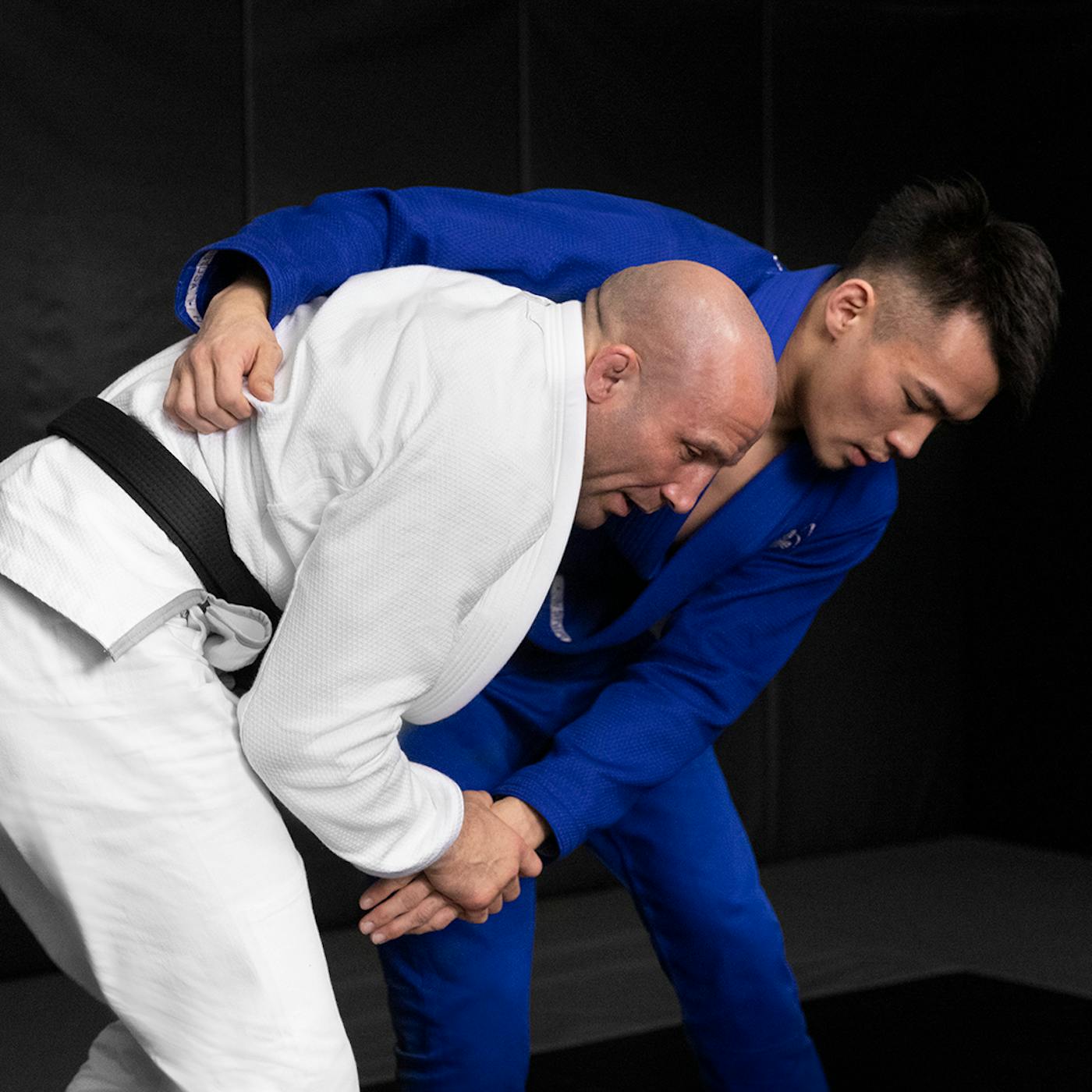The grappling martial arts comparison between Brazilian Jiu-Jitsu (BJJ) vs. Sambo has been evaluated across self-defense effectiveness, competition intensity, and even military combat.
But which one is right for you?
Since every fighter is guided by their own personal goals, it depends on what you hope to achieve. Is it gaining an edge when competing, a desire to learn new skills, or wanting to feel more confident on the mat and in the real world?
In this guide, we’ll break down the background, techniques, and different training styles of Brazilian Jiu-Jitsu vs. Sambo to help you decide which one you’ll declare the winner.
Origins & History: How Jiu-Jitsu and Sambo Developed
Uncovering the history of martial arts adds a level of respect to each discipline, as well as a better understanding of how the techniques and purpose of each evolved.
The Birth of Brazilian Jiu-Jitsu (BJJ)
The beginnings of Jiu-Jitsu can be traced back to Japanese roots before it was adopted by the Gracie family in Brazil who interpreted it into what’s now commonly known as BJJ.
Japanese Jiu-Jitsu and judo included strikes and throws as part of their notable techniques. Whereas, BJJ involves three key elements: grappling, ground fighting, and submission holds.
These remain the traditional core of BJJ, though guard positions have become the sport’s hallmark. There are several innovations in technique, including the butterfly guard, worm guard, and inverted guard, among others.
These creative BJJ positionings allow fighters who are smaller in size and stature to control larger opponents and cause them to submit.
Related Read: The Role of Weight Classes in Jiu-Jitsu
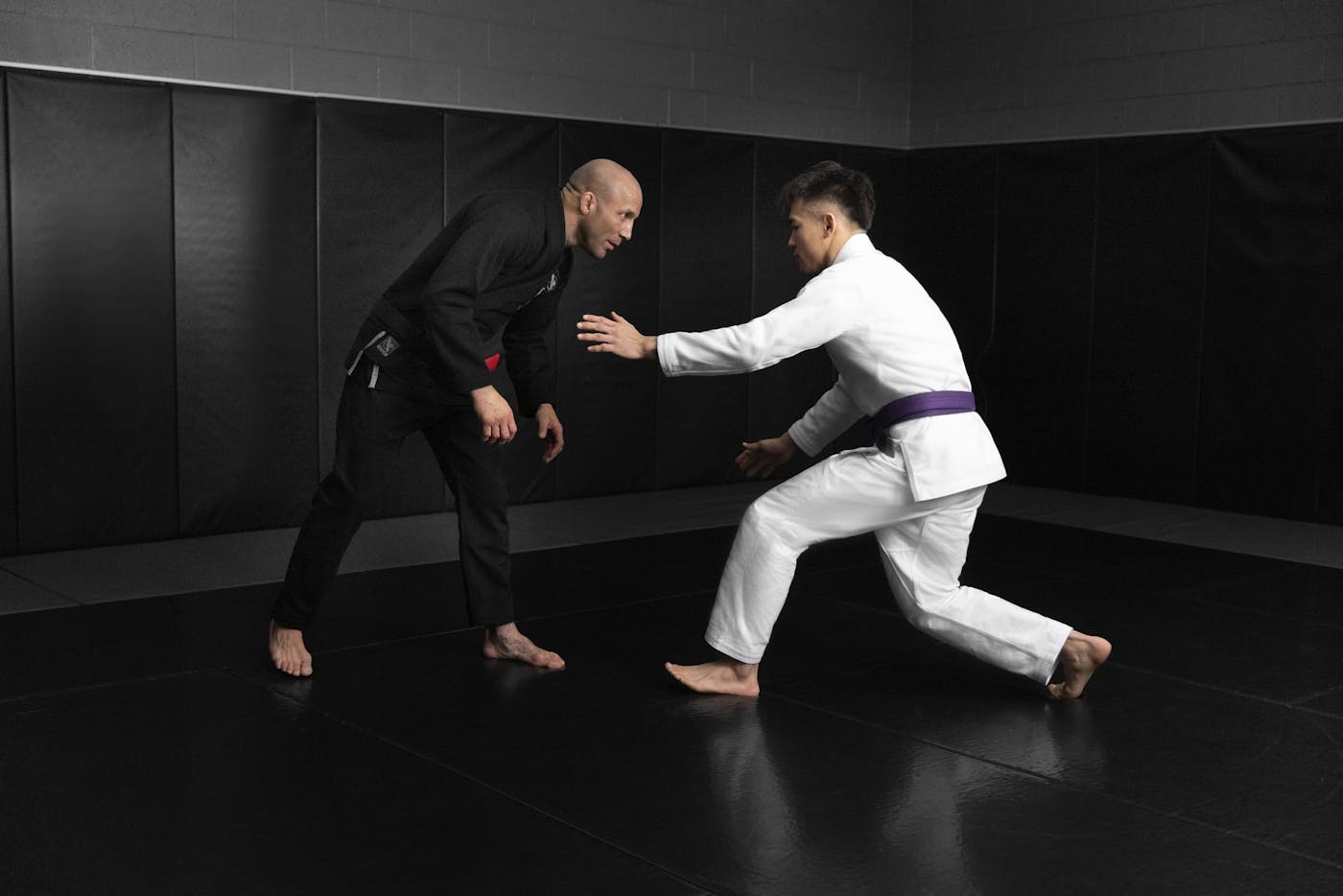
The Creation of Sambo in Russia
With less public acclaim though still popular in the fight world, Sambo fuses several grappling sports and styles, including Judo and wrestling.
It was initially developed by the Soviet military in the 1920s and incorporates Eastern European practical combat elements. This grappling art eventually emerged into different styles: Sport Sambo and Combat Sambo.
Sport Sambo closely reflects Judo techniques with the addition of leg locks and dynamic throws. Meanwhile, Combat Sambo is a more intense integration of strikes and submissions designed for self-defense and real-world combat.
Both are equally powerful and echo the originations of where this fighting style first began.
Key Sambo vs. Jiu-Jitsu Techniques & Fighting Styles
For MMA fighters, choosing between Brazilian Jiu-Jitsu vs. Sambo is often determined by which gives a greater competitive edge.
However, training in both helps to improve self-defense techniques and broadens the scope of your grappling arts knowledge.
Brazilian Jiu-Jitsu Techniques
BJJ is best known for its emphasis on guards and submissions. Each guard is designed to use a fighter’s body weight to outbalance or outposition their opponent without depleting their strength and energy.
For example, a closed guard is one of the key techniques first taught in BJJ. It involves wrapping and locking the legs around an opponent’s hips to prevent them from moving past the legs. Its purpose is to limit an opponent’s position and distance.
Submissions are the other primary technique used in Jiu-Jitsu. They include leg locks, arm bars, triangle chokes, kimuras, and more. Each submission targets a specific body part of the opponent, limiting their movement and forcing them to tap out.
To gain the advantage of implementing any of these techniques, BJJ fighters must also learn ground positioning and body proximity to be able to control the fight on the ground, before a submission.
In general, BJJ fighters are known to pull guard versus aim for takedowns, as this is not a primary technique.
Related Read: Jiu-Jitsu Dictionary: Common Terms & Techniques
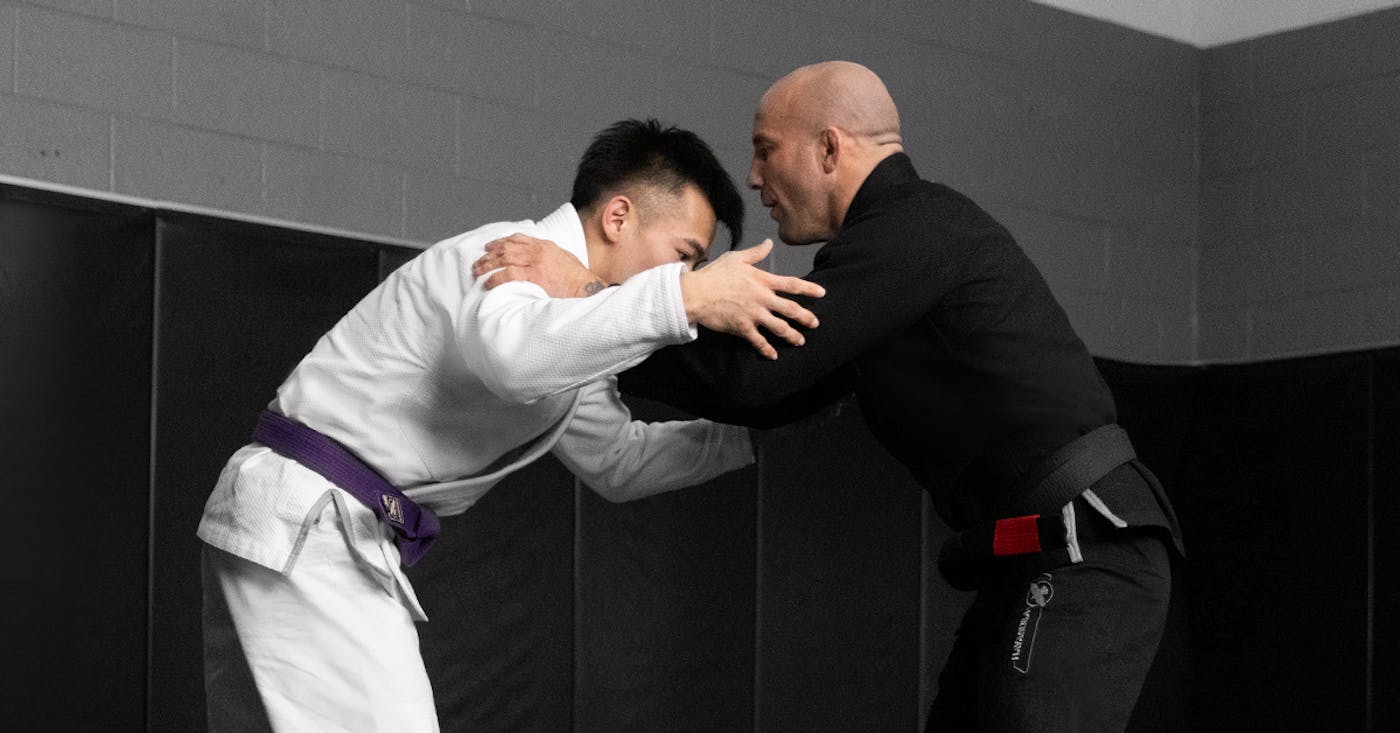
Sambo Techniques
Driven by its strong militaristic background, Sambo combines the discipline of hand-to-hand combat with the fighting style of wrestling.
Sambo techniques focus on a throw-heavy system including hip tosses and wrestling takedowns. Plus, the submissions are fast-paced with extra emphasis on leg and ankle locks and knee bars compared to BJJ.
Grappling in Sambo is usually performed while standing rather than focusing on ground fighting. Additionally, there are also kicks, punches, and headbutts allowed in Sambo competitions, unlike the techniques and strategies in traditional BJJ.
In addition to Sports Sambo and Combat Sambo, there is also Freestyle Sambo, which allows the use of chokeholds and other submission techniques, as well as Self-Defense Sambo which is taught in training to use against opponents with weapons.
Sambo vs. BJJ for MMA – Which Style Works Best?
Both grappling arts have been leveraged successfully by MMA fighters.
Fighters like Demian Maia, Charles Oliveira, and Brian Ortega have used BJJ as a way to dominate ground fighting and implement submissions from the bottom as an advantage.
Meanwhile, MMA fighters like Khabib Nurmagomedov and Islam Makhachev have relied on the wrestling-forward approach of Sambo to initiate takedowns and take control of opponents.
Ultimately, when comparing Sambo vs. BJJ for MMA, the latter is better if the fighter leans toward a submission-forward approach. Whereas, Sambo reigns supreme for takedown dominance.
Jiu-Jitsu vs. Sambo for Self-Defense in Real-World Situations
In one-on-one street fights, Jiu-Jitsu offers greater control over an opponent, though is less effective if there are multiple attackers.
Also, since Jiu-Jitsu techniques are designed to gain leverage over opponents regardless of size it can be helpful against larger attackers. However, this type of martial arts lacks striking techniques that are valuable for self-defense.
Sambo is the more aggressive of the two, with a focus on both strikes and throws. This is ideal for real-world situations where finishing fights quickly is a priority. While there is less control than with Jiu-Jitsu, it’s better suited for self-defense in real-world situations.
Hayabusa Ascend Lightweight Jiu Jitsu Gi
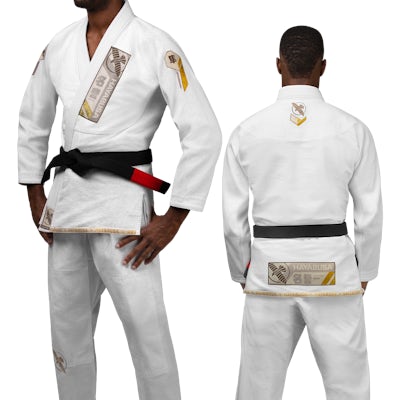
Hayabusa Warrior Gold Weave Jiu Jitsu Gi

Hayabusa Essential Gold Weave Jiu-Jitsu Gi

Hayabusa Ultra-Lightweight Jiu Jitsu Gi
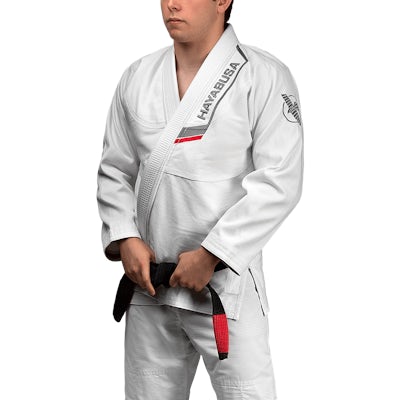
Training Differences: Which One is More Physically Demanding?
The physical demands of both Jiu-Jitsu and Sambo require strength, agility, and flexibility. Due to the differences in technique for each, there are varied training styles when focusing on one over the other.
BJJ Training Style
The BJJ training style involves slow and strategic sparring. It’s less about mastering a quick takedown and more about anticipating the opponent’s next move.
Additionally, the training style depends on whether or not you’ll be fighting gi or no-gi Jiu-Jitsu. No-gi training is faster-paced while training with a gi requires patience and grip strength since the uniform becomes part of the fight.
Related Gear: Hayabusa Jiu-Jitsu Gis
Sambo Training Style
In Sambo, the emphasis is on explosive, fast-paced takedowns. Flexibility is required for leg locks and an aggressive approach is part of what’s necessary to advance on the opponent.
Related Gear: Hayabusa Jiu-Jitsu Belts
Which Martial Art Should You Choose?
Learning either martial art makes you a force to be reckoned with, though you may naturally gravitate to one over the other.
When making the grappling martial arts comparison, fighters who prefer submission-heavy ground fighting should choose BJJ which is better geared toward this style.
It’s also a discipline structured by a belt ranking system to mark new achievements. Additionally, it leans heavily on mental strategy just as much as the physical control over opponents.
On the other hand, choose Sambo if a faster pace is more your style. It incorporates a combination of strikes, leg locks, and throws with a focus on offensive attacks for a true combat-oriented grappling system.
Both types of training are valuable, and Hayabusa helps you dominate with the best gear to support you whenever you’re on the mat.
From Jiu-Jitsu Gis, belts, and more, explore our Premium Jiu-Jitsu Collection today!

